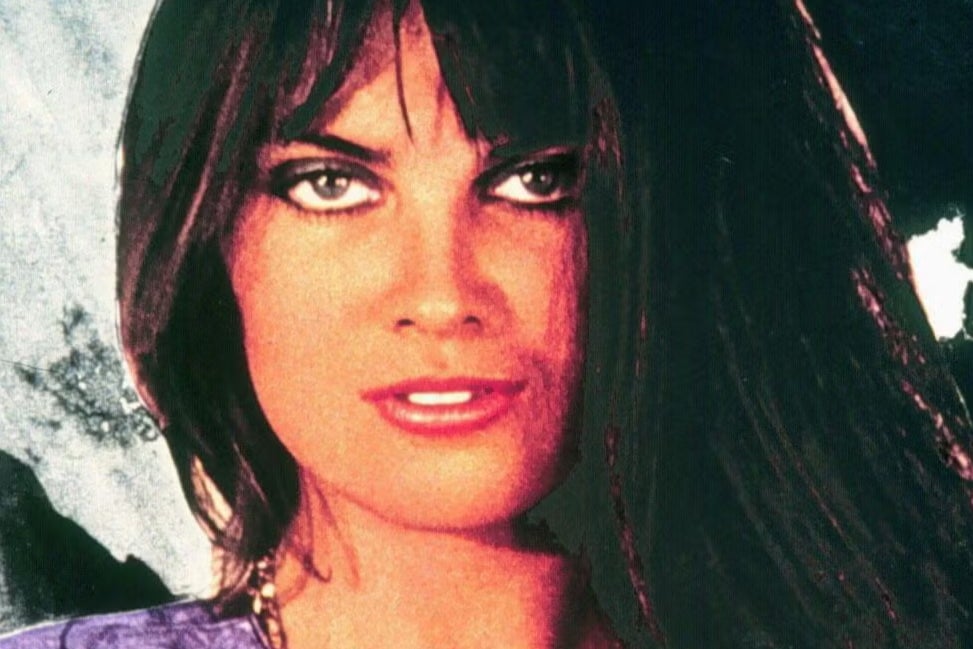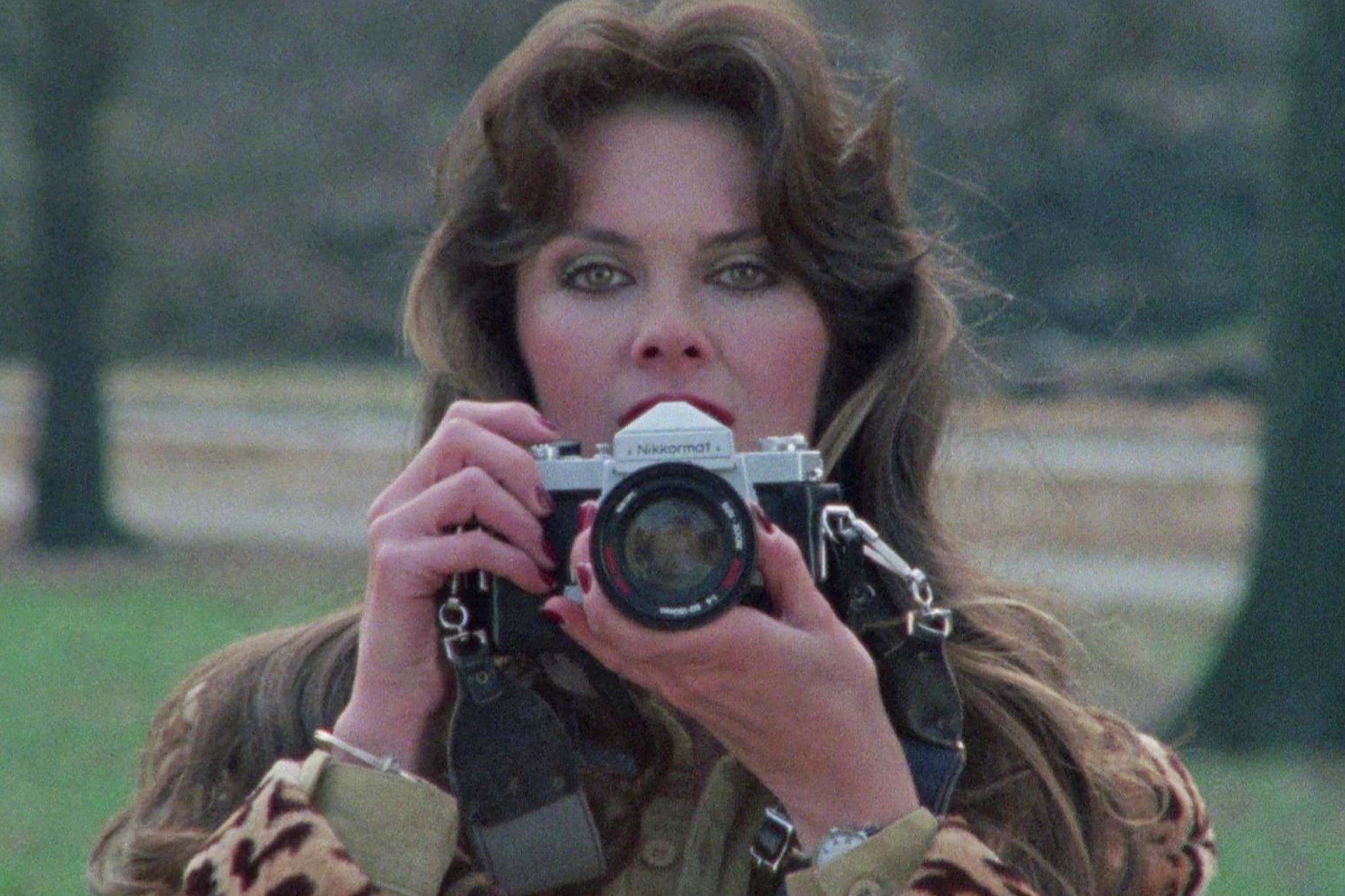Hammer Horror icon Caroline Munro on sex, violence and the future of 007: ‘A woman doesn’t need to be Bond’
Dubbed the ‘Face of 1966’ before finding global fame as a Bond girl in ‘The Spy Who Loved Me’ and a scream queen in ‘Dracula AD 1972’ with Christopher Lee, the British star speaks to David Barnett about typecasting, nude scenes and playing dead opposite Vincent Price


Hammer Horror queen Caroline Munro has one of the most outrageous CVs in cinema. There’s Slaughter High and Flesh for the Beast. Starcrash, a Star Wars knock-off with a young David Hasselhoff. Maniac and I Don’t Want to Be Born. That last one saw Joan Collins give birth to a demonic baby. In Captain Kronos: Vampire Hunter, the Berkshire-born, Brighton-raised actor played a girl ignominiously locked up in the village stocks.
It’s 50 years since the film was released, but it’s still one her fans most want to talk to her about at conventions. That and Dracula AD 1972, the schlocky attempt to bring the blood-sucking Count to the present day, in which Munro, dressed in thigh boots and black underwear, became the first victim of Christopher Lee’s vampire. Then there’s The Spy Who Loved Me, in which her villainess Naomi at one point tries to blow up Roger Moore’s 007 from a helicopter. I tell her that there’s a popular GIF of her winking in the cockpit.
“What’s a GIF?” the 75-year-old asks me, fabulously. She doesn’t have a huge amount of truck with online life; she doesn’t even do email. That said, she has a thriving Facebook page, overseen by her manager Jayne, which has 440,000 members. That so many people wish to keep up with her career seems to be a source of delight and slight puzzlement. “It’s funny, sometimes, when I think about it,” she says. “But also very flattering.”
One of the busiest and most desired faces of Seventies and Eighties cinema – the majority of them B-movies, many of them revered by a cult fanbase today – Munro is now a regular on the convention circuit. I meet her in Bradford on a rare weekend off. It’s the morning after she introduced a Bond-themed music concert in the city, and she’s also just been in Romford for a showing of an independent movie she’s made, titled The Pocket Film of Superstitions. Before that, she was a guest at a convention in Florida, where she rubbed shoulders with other star names from the world of sci-fi and fantasy. “The Hulk for one,” she recalls. “And Spike from Buffy.”
Munro prides herself on her packed itinerary, particularly when it involves her work introducing weekly horror films for Talking Pictures TV. She was just at the TV Choice Awards on their behalf, she says, where the broadcaster was nominated for Favourite Channel/Streamer. What’s her secret to keeping so busy? “Coffee, chocolate and stress,” she jokes.
It’s all the more remarkable when factoring in her personal life, which has been recently fraught. In 2018, she was diagnosed with breast cancer, from which she has now recovered. In 2020, she experienced the death of her husband of 30 years, the film director George Dugdale – with whom she has two children, Georgina, an actor and stylist, and Iona, a musician. Many would feel compelled to curl up into a ball as a result, but it has only made Munro more active. “I suppose the travel can be quite tiring these days,” she says. “But I do enjoy the shows. The fans are so sweet and it’s a chance to catch up with so many people. They’re an absolute joy, actually.”
I’d seen ‘Psycho’ and that terrified me! I like more gentle films with nice stories
Munro has had a legion of followers for most of her life, ever since she was a 17-year-old student at the Brighton College of Art, who was asked by a fellow student whether he could take some photos of her. Without telling anyone, he entered the pictures into a competition run by the Evening News, a now-defunct London newspaper. One of the judges was the legendary photographer David Bailey, who helped declare Munro’s portrait the winner. The paper named her the “Face of 1966”, and a career was born. To put the speed of her ascent into perspective, it had been only weeks earlier that she’d been applying for local window-dressing jobs.
Within months, Munro was posing for Vogue and contracted to promote Lamb’s Navy Rum, a gig that put her on billboards across the country. The advertisements, which depicted a wetsuit-clad Munro reclining on a sun-kissed beach, drew significant attention – not least from her father. “He worked in the City as a solicitor,” she laughs. “He got off the train one morning at Waterloo to see me on this massive poster. I can only imagine the ribbing he got in the office.” Lamb’s Navy had previously advertised their product with bearded, tattooed sailor-types, so sexier imagery proved a dramatic departure. “In one of the shots I had a knife,” Munro says. “I looked very tough. It was sexy, yes, but also very empowering, I think.”
With her dark-haired beauty, Munro continued to be in-demand as a model. This was an era of new permissiveness, too, meaning many photographers and filmmakers could ask their female talent to bare their flesh. Munro, however, always demurred – she’s never done full nudity in either modelling or in her acting work. Even when she posed for The Sun’s Page 3, she insisted on wearing a swimsuit. “Nudity was becoming more and more acceptable, and there’s absolutely nothing wrong with it,” she says. “But for me, it was something I never felt comfortable with, so I didn’t do it. It was my choice.”

Her no-nudity clause may have meant turning down higher-profile roles along the way – she was attached to an adaptation of the comic book character Vampirella, as well as the star-studded war film Force 10 from Navarone – but she still managed to thrive in the film world. Among the many millions who saw the Lamb’s Navy poster campaign were two men who would be pivotal for the young Munro’s career: Hammer Films chair James Carreras, and then Bond supremo Cubby Broccoli. Munro signed an exclusive contract with Hammer for a time, but it had its drawbacks – when a rival studio offered her a role in The Abominable Dr Phibes starring Vincent Price, she was told she couldn’t do it. She snuck away and filmed it anyway, but appeared uncredited and spoke no dialogue. She wasn’t being rebellious, she insists, she just really wanted to work with Price.
“I just lay there and said nothing, but it gave me an opportunity to watch Vincent in action,” she remembers. “He was such a brilliant actor, and a wonderful gentleman.” She did the sequel, too: Dr Phibes Rises Again. “I just had to lie in a coffin, which was brilliant because I could watch it all going on around me and I didn’t have to do anything apart from not breathe or blink. Vincent would say, ‘Caroline, I saw your chest move!’”
Not having had formal acting training, Munro learnt her craft on the job – from giants such as Christopher Lee, Peter Cushing and Roger Moore, all of whom she says were “utter gentlemen”. As she entered the Eighties, she began working on more and more horror pictures – including Slaughter High, directed by her future husband Dugdale. These films tended to be grislier than the gentle gothic horror of her Hammer era. Maniac, for instance, starred Joe Spinell as a serial killer loosely based on the real-life mass murderer dubbed the Son of Sam. Munro was appearing at a horror convention in the US when she was asked by Lustig and Spinell to star in it at the last minute – an actor had just dropped out and they needed a quick replacement. “I was told it was a slasher film, and I had no idea what that was,” she says. “So they took me out to a cinema on 42nd Street and we watched Halloween. They said, ‘right, this is the sort of thing we’re going for’.”

The film proved controversial, branded a “video nasty” and serving as a key film in the resulting moral panic that engulfed horror films of the decade. It was even banned in Germany because of its violence. She remembers hearing about opposition to the film once it was finally released. “I was due to fly out to a showing in California but I got a phone call from Joe saying women were demonstrating against the film and I should probably stay away,” she says. Was she ever uneasy with the blood and gore of those films? “The movies were violent, but I feel a lot of people took against them without actually watching them. They were protesting against what they thought the films were about, when quite often a lot of these films had a surprising moral centre, and delved into the psychology rather than just being violent for violence’s sake.”
She admits that she was never a horror fan growing up. “I’d seen Psycho and that terrified me! I like more gentle films with nice stories. But having said that, my mum introduced me to films at a very young age, and one of the first I vividly remember watching was a black and white film called Carve Her Name with Pride, starring Virginia McKenna, about the French resistance fighter Violette Szabo. We lived in Richmond and mum would take me to the pictures. I also remember Attila, which was very bloody. They didn’t seem to mind young children going into films like that in those days.”
Munro remains a film lover. She tells me she goes to a specific London cinema on Monday afternoons to watch old movies, while introducing her Talking Pictures TV series The Cellar Club means that she still gets to discover older classics – and revisit many of her own films. “It’s tremendous fun,” she says. “There’s so much to love about the old films. When you consider the Hammer movies were shot on such small budgets, and had no CGI or anything, they’re amazing. Cinema is wonderful now, but modern films are very different to the old ones.”

Did she ever feel that she’d been typecast as a horror actor back then? “I suppose so,” she sighs. “I fell into acting almost accidentally, and the horror and fantasy movies were the parts I got offered, which I was always so grateful for because people still love them today.” She did try out for different kinds of roles, though, and mentions Jonathan Glazer’s crime thriller Sexy Beast starring Ray Winstone. She auditioned for the part of his ex-porn star wife, a role that eventually went to Amanda Redman. “And she was brilliant in it,” she says. “It was absolutely the right choice. [My husband] always said that if you were right for a part, you’d get it, and if you weren’t then you wouldn’t. As an actor, you’ve just got to move on.”
She says that The Spy Who Loved Me was perhaps the most mainstream movie she ever did in her early career. Given that she’s Bond royalty, I have to ask the inevitable question: who would she like to see play Bond now that Daniel Craig has exited the franchise? “I was asked this at the TV Choice Awards!” she laughs. “Ooh, I don’t know... Tom Hardy, maybe?” She doesn’t think the role should be gender-flipped, though. “Bond should be a man,” she says. “There are so many strong roles for women in James Bond movies today – women don’t need to be Bond. They can be characters who are just as strong and empowered.”

It’s something Munro herself knows well. Between cancer and the death of her husband, she has found a fortitude she didn’t know she had. She’s become heavily involved in fundraising for the cancer charity Maggie’s, raising thousands of pounds via friends from TV and film, and lights up when talk turns to her daughters – both of whom, she says, have pulled her through the worst of it. “I was really broken [after George’s death],” she says. “But Georgina and Iona have been amazing. They are my pillars, [and] unbelievably strong. You have to carry on. It did take me quite a while, and it’s not been at all easy, but I know George would want us to keep things going.”
She grows wistful. “I get really good days, especially when I’m working and my mind is occupied, and then I get really bad days,” she says. “But at the end of the day, we have to try to stay positive about life and keep moving forward, because it’s the only way. We have to have hope, don’t we?”
Spoken like a true survivor. If not when Dracula’s around.
Caroline Munro is appearing at the Talking Pictures Festival of Film in St Albans on 16 and 17 March. You can keep up with her work and convention appearances at her website
Join our commenting forum
Join thought-provoking conversations, follow other Independent readers and see their replies
Comments
Bookmark popover
Removed from bookmarks